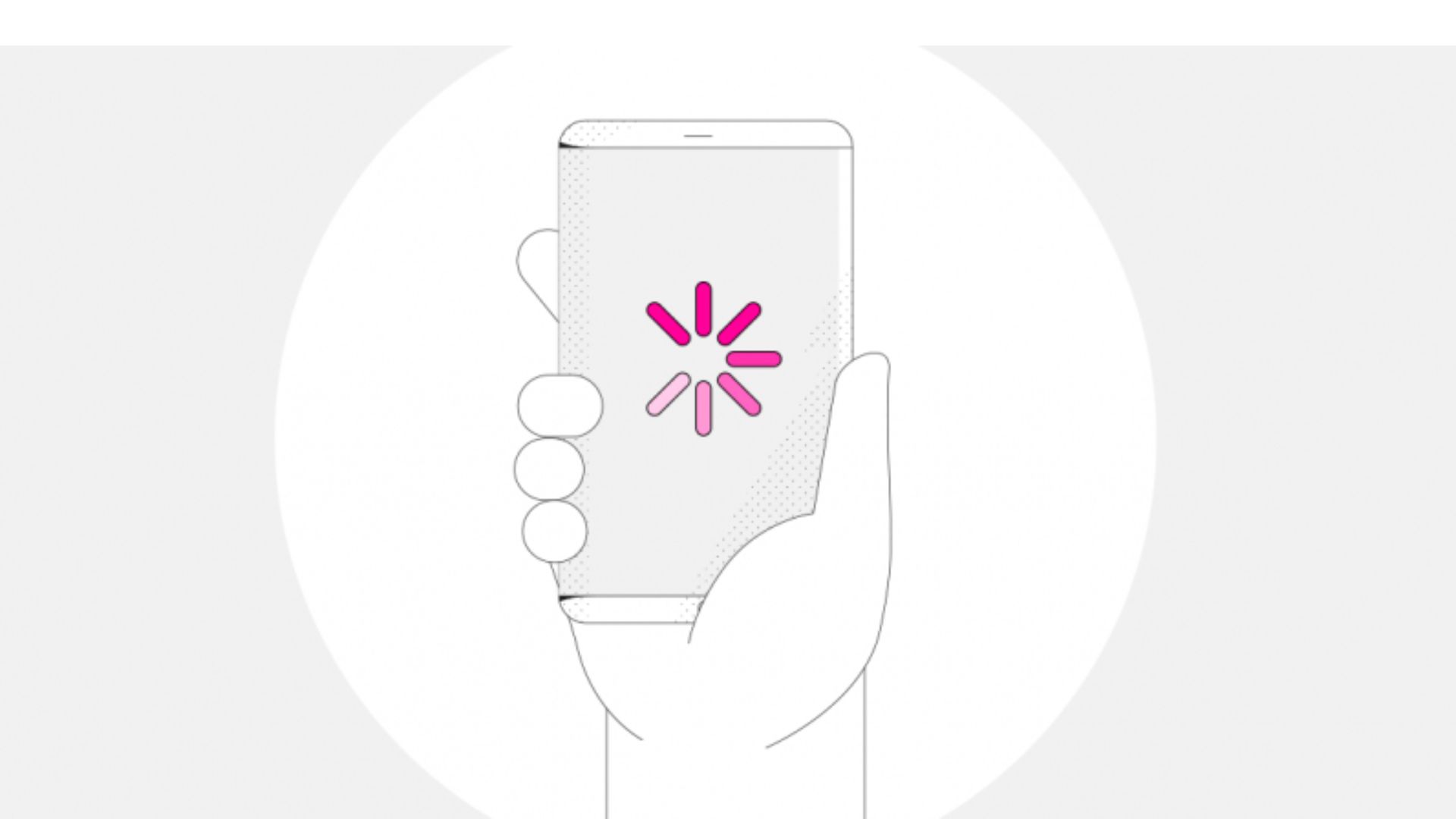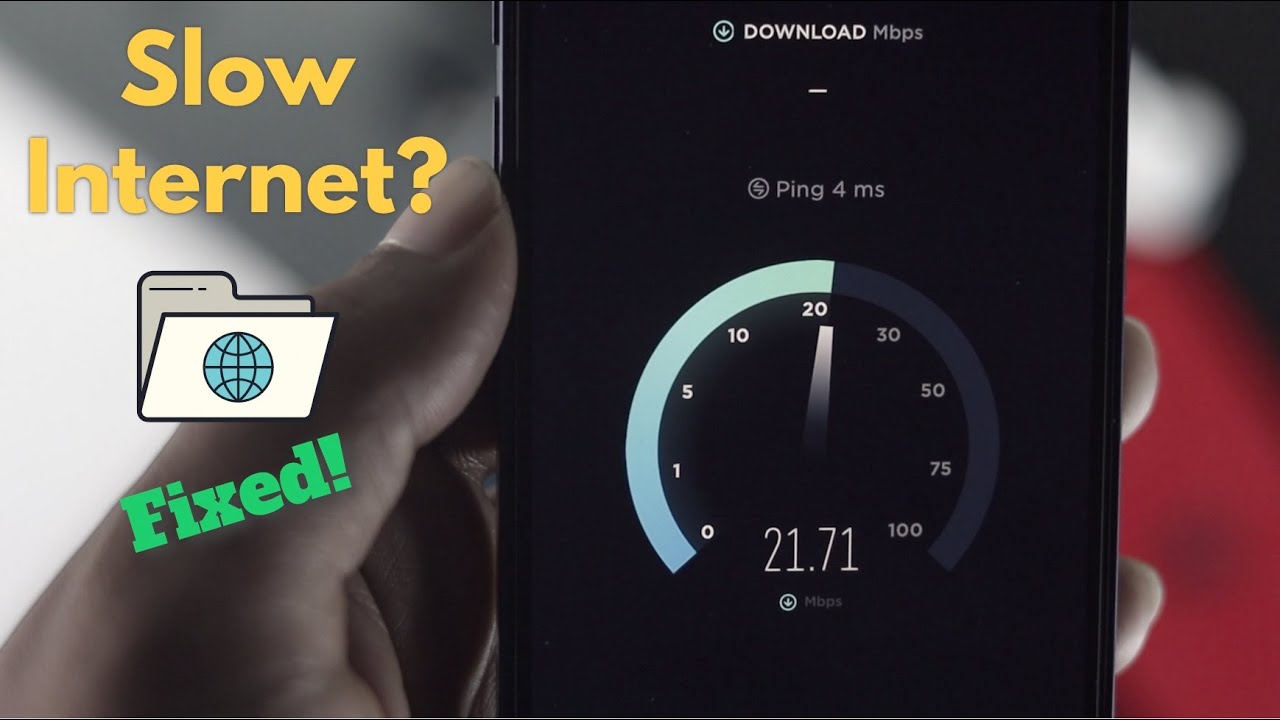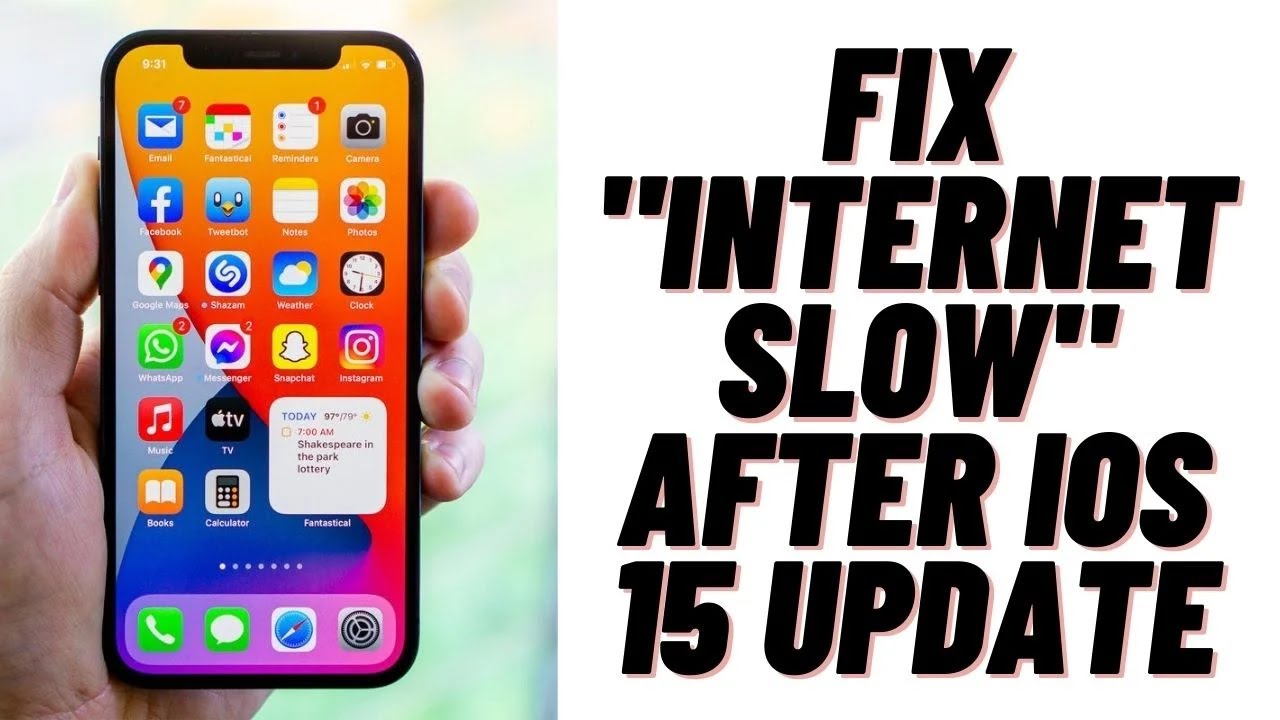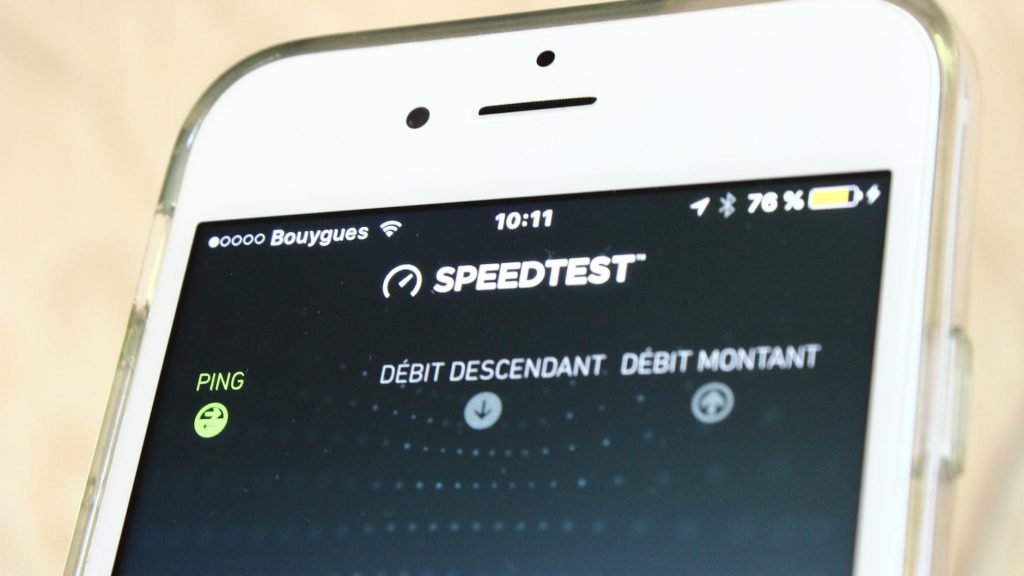What's Slowing My Iphone Internet? Make It Faster
For instance, while you are viewing a web page or playing any kind of media, you frequently have to wait for a significant amount of time. Due to the aggravating nature of the situation, it is imperative that you figure out the cause of the poor internet connection that you are having on your iPhone. Read on for some remedies that are not only straightforward but also highly effective if you want to learn why is my iphone internet slow and how to resolve it in order to make the internet run more quickly.
Author:Daniel BarrettSep 22, 202395.5K Shares1.8M Views

The proper operation of your iPhones and any other cell phones requires that they be connected to the internet. As devoted Apple customers, iPhones are likely the devices you use most frequently on a daily basis; nonetheless, you may run into instances in which the Wi-Fi connection is established but does not function properly.
For instance, while you are viewing a web page or playing any kind of media, you frequently have to wait for a significant amount of time. Due to the aggravating nature of the situation, it is imperative that you figure out the cause of the poor internet connection that you are having on your iPhone.
Read on for some remedies that are not only straightforward but also highly effective if you want to learn why is my iphone's internet slowand how to resolve it in order to make the internet run more quickly.
Why My IPhone Internet Slow?
Are you experiencing a slow connection on your iPhone while using the internet? If this is the case, the first step is to identify the root cause of the delay.
The sluggish internet speed that you experience on your phone may be caused by a number of different internal and external variables; nevertheless, there are a few primary causes that you need to investigate before trying to implement any repairs.
Slow iPhone
To begin, the performance of your iPhone might be the cause of your internet being so slow. A clogged RAM, an excessive amount of surfing data, a lack of available storage space, virus difficulties, obsolete software, outdated applications, enabled VPNs, concealed display settings, and a great number of other reasons can all have a negative impact on performance.
Geographic Location
You can try moving to a different place to see if that helps improve the connectivity. It's because the signals can be spotty in your general vicinity if you're using mobile data, which can be frustrating.
Router Problem
The speed of internet access on your iPhone is directly influenced by the router. Consequently, it is necessary for you to determine whether there is an issue with the router or the modem.
Unstable Connection
You have a responsibility to check that your internet connection is robust and complete. You will need to deal with the issue of the iPhone's internet speed being slow if the internet connection is unreliable.
Network Settings
Have you looked at the settings for your iPhone's Wi-Fi and network connections? The browser history and cached caches on your iPhone may be to blame for any network errors you experience. These factors also contribute to a slower connection speed.
How To Fix iPhone Internet That's Very Slow (5 Ways To Fix It)
You may optimize your display settings, clear out old data and garbage files, and keep your software up to date to speed up your iPhone, whether you have the most recent model, the iPhone 14, or an earlier model, such as the iPhone 4, iPhone 5, iPhone 6, or iPhone 7. In order to obtain the most performance possible from all of your Apple products, you should also make sure to speed up your Mac. The following are the most effective strategies for making your iPhone run more quickly.
Check For Ios Updates
A sluggish iPhone may benefit from having the most recent version of iOS software installed. People frequently notice speed issues on their existing versions of iOS when new upgrades for that operating systemare released.
Additionally, some users have reported that their devices are getting too hot. Not only may updating your phone make it run quicker and make it feel cooler (literally), but it can also increase the security that is already built into your iPhone. Here's how to check if there are any new software updates available for iOS.
- Launch the app that controls settings. After selecting General > Software Update, you will need to wait while the operating system checks for available updates.
- After selecting Download and Install to bring your iPhone up to date with the most recent version of iOS, you will need to enter your password to finish the installation.
Turn Off Location Services
Location services are essential to the operation of many mobile apps. If the Google Maps app is unable to pinpoint your location, it won't be able to guide you back home. Without the GPS coordinates of a ride, ride-sharing apps are unable to track rides in real-time. However, it is not necessary for these location services to be available at all times.
If your iPhone is moving at a snail's pace, you should check the location permissions. Check in a flash to see which apps make use of location services, which apps can be turned off entirely, and which apps should only make use of location services while you are actively using the app.

Slow internet on iPhone? – Here’s How to Fix!
Get Rid Of Widgets You Don't Need
If an app has a widget on the home screen of your iPhone, you can check to see if it has been updated without actually opening the app. They rely on background data (or a reliable network connection) and live updates, both of which can cause your iPhone to become unresponsive if you use it too often.
Simply tap and hold the widget you want to delete on the home screen of your iPhone, and then pick Delete Widget from the menu that appears. Repeat tapping the Remove button to confirm.
Turn Off The Background App Refresh
Background app refresh enables applications to update their content even when they are not being used, ensuring that when the application is opened, all of its components are current. When you check your email or log in to a social network account, the feed will be up to date automatically thanks to this feature.
However, background app refresh may also cause your iPhone to run more slowly than usual and consume more battery power than usual. Disabling background app refresh will help you use less background mobile data because most applications do not need to be refreshed until you access them after you have opened them.
Free Up Space On Your Device
Have you taken a gazillion pictures today or been sent a huge video through a group chat? Or, to make matters worse, does your iPhone need to be cleaned of bloatware or garbage files because it runs too slowly?
First, uninstall any useless apps and bloatware, then go through and get rid of any unwanted photos and videos. Cleaning up some space in your iPhone's memory can make the device run noticeably more quickly. Keep in mind that the act of merely concealing apps on an iPhone does not result in the release of additional storage space.
Replace Your Battery
Use the menu at Settings > Battery > Battery Health& Charging to check the status of your battery. If your battery function percentage is less than 80%, it indicates that the battery is deteriorating, and it is likely that changing the battery will enhance the general performance of your iPhone.
The maximum capacity of your battery is indicated by the percentage. If you want to avoid permanently damaging your iPhone, you should take it to an authorized Apple repair center to get the battery replaced rather than trying to replace it yourself.
How To Reset Network Settings On Your Iphone To Improve Internet Speed?
If you want to boost the speed of your internet connection on your iPhone, you can try resetting the network settings. This will clear out any settings that are related to the network and restore them to their original values. The steps necessary to reset the network settings on your iPhone are as follows.
- Launch the Settings app on your iPhone, then select the General option from the menu that appears.
- Now, select the option to Reset, and then select the Reset Network Settings option.
- Please proceed by following the on-screen instructions, and before you can move on, you will need to enter your password.
It's possible that these problems with Bluetooth can be fixed by resetting the network settings. Check to see if your iPhone supports Bluetooth and then turn it on.

How to Fix "Internet Slow" After iOS 15 Update on iPhone/iPad
My iPhone’s Internet Speed Is Still Slow. What Action Should I Take?
It is highly unlikely that a hardwarefault is the source of the poor internet connections experienced by iPhone users. If you are still having problems after attempting the solutions that we suggested, then you need to get in touch with your cellular service provider. It's possible that they momentarily slowed down your internet connection on purpose, or that you're just having trouble with the network.
You will need to get in touch with Apple if you are experiencing slow access through both Wi-Fi and cellular connections, and your mobile network is unable to assist you in any way. You are welcome to bring the item in question to any Apple Store that features a Genius bar.
Assuming the problem is with the phone's hardware, you shouldn't have to pay for the repair if your phone is still protected by the original one-year factory warranty or if you purchased an extended warranty for it.
It's possible that you purchased an AppleCare+ plan. If that is the case, then should also cover any faults with the hardware that are causing sluggish internet speeds. On the other hand, phones do, in general, become slower over time, whereas the requirements of standard internet use continue to expand.
It's possible that it's simply time for an update. The most recent Apple products, such as the iPhone 14, should provide a significant increase in speed in comparison to older versions that were released some years earlier. Additionally, you have the option of selling your previous iPhone to Buyback Boss in exchange for cash, which you can then apply toward the cost of your purchase.
People Also Ask
How Does A Crowded Network Influence The Speed Of My Internet Connection?
It is possible for data transfer rates to be slowed down when an excessive number of users connect to the same cellular tower or Wi-Fi network at the same time.
What Can I Do To Enhance The Internet Speed On My Iphone When I'm In A Very Populated Area?
You might try connecting to a different Wi-Fi network, or you could switch to a different cellular provider that has better signal strength.
Is It Possible That Older iOS Software Could Slow Down Internet Performance?
The use of an older version of iOS can, in fact, be a contributing factor to slower internet connections, given that newer upgrades frequently feature connectivity improvements.
Conclusion
Why is my iPhone internet slow, for a number of reasons, including but not limited to network congestion, using outdated software, and having background programs running in the background?
You may substantially enhance the speed of your internet connection and the surfing experience you have on your iPhone by first gaining knowledge of the potential reasons for the issue and then putting the offered solutions into action.
To get the most out of your iOS, be sure to update it on a regular basis, take control of background app refresh, and regularly clear off storage space. Additionally, when it is vital to have a good internet connection, you should check for DNS problems and think about withdrawing from VPNs. Your frustrations with a poor internet connection can be alleviated and the capabilities of your iPhone can be maximized if you follow these suggestions.

Daniel Barrett
Author
Daniel Barrett is a tech writer focusing on IoT, gadgets, software, and cryptocurrencies. With a keen interest in emerging technologies, Daniel offers expert analysis and commentary on industry trends. Follow him for authoritative insights into the latest tech innovations.
Latest Articles
Popular Articles
